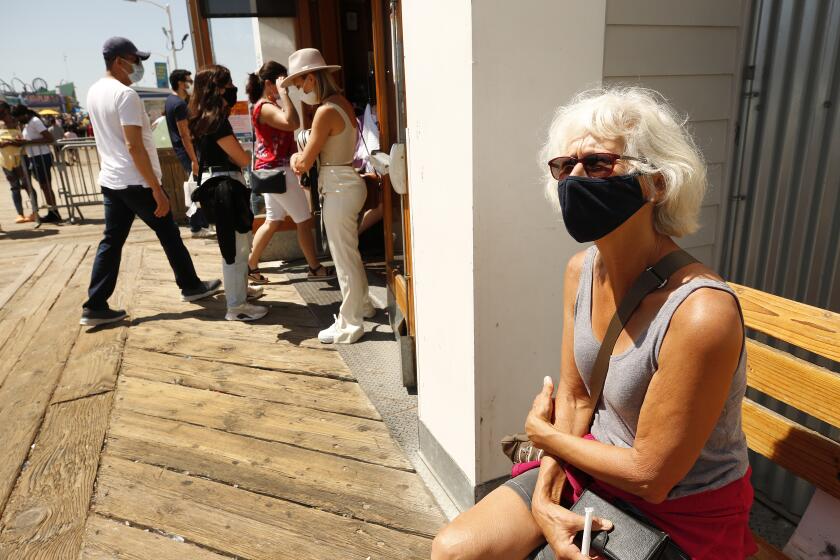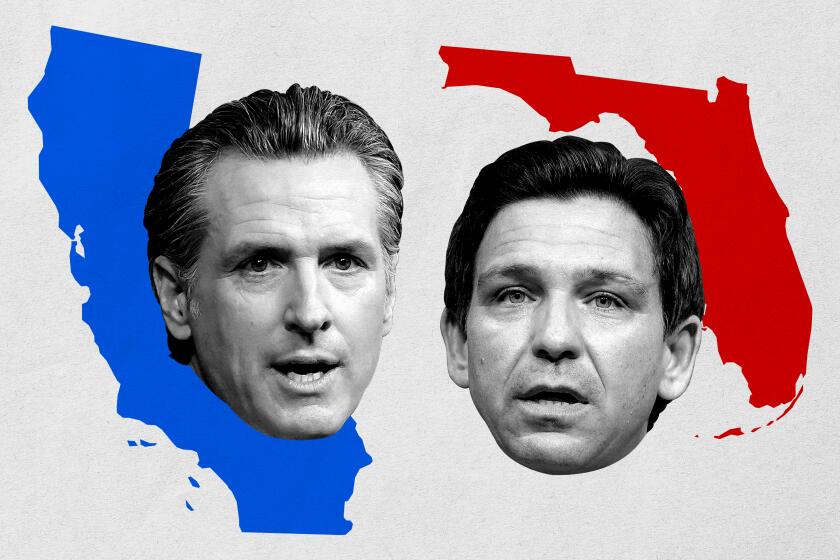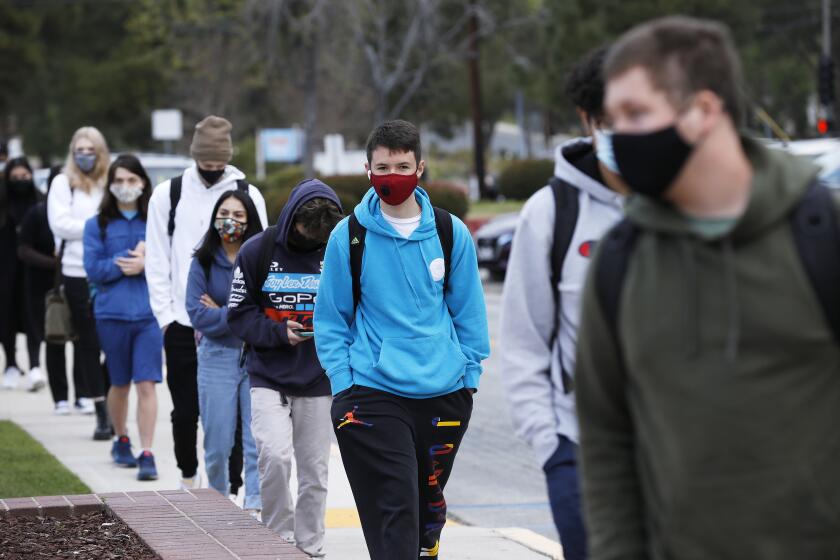DeSantis bragged about a COVID study during Newsom debate. Not so fast, lead author says

During the Fox News debate between Florida Gov. Ron DeSantis and California Gov. Gavin Newsom, a study published in the scientific journal the Lancet was highlighted as vindication for the Sunshine Stateâs loose pandemic policies.
As the two traded barbs over who was a âlockdown governor,â DeSantis crowed about his state reopening quickly and said: âIn fact, the Lancet just did a study: Florida had a lower standardized COVID death rate than California didâ when adjusted for how Floridaâs population skews older and has higher rates of underlying illness, such as cancer and heart disease.
With that adjustment, Florida ranks as having the 12th-lowest standardized death rate nationally among states, compared to the 14th-highest raw death rate.
Some critics of the tough public health measures implemented in many states in response to the pandemic have seized on that finding as proof that strict practices such as stay-at-home orders, masking, limited vaccine mandates and social distancing werenât needed to control COVID-19.
But the studyâs lead author says thatâs the wrong takeaway.
Amid controversies over stay-at-home and masking orders, a lasting difference between Govs. Gavin Newsom and Ron DeSantisâ approach may end up being rhetoric on vaccine safety.
âIf [DeSantis] is using the study as an example to support the message that masks, or staying at home, or vaccines did not matter in this pandemic, then that would be using the study inappropriately â because that is not what it shows,â said Thomas J. Bollyky, director of the global health program at the Council on Foreign Relations, a nonpartisan think tank.
âThe governor aggressively promoted those behaviors early. And the reality is even when he started to turn away from those behaviors in 2021, Floridians continued to adopt them, and at rates that exceeded the national average,â Bollyky said in an interview.
Through mid-2022, Floridians ranked in the top half of states in vaccine coverage and mask use, and in the top quartile of states for reduced mobility (how often people stayed home compared to pre-pandemic times).
Mobility statistics came from four sources of cellphone GPS data, which was used to calculate daily mobility relative to before the pandemic.
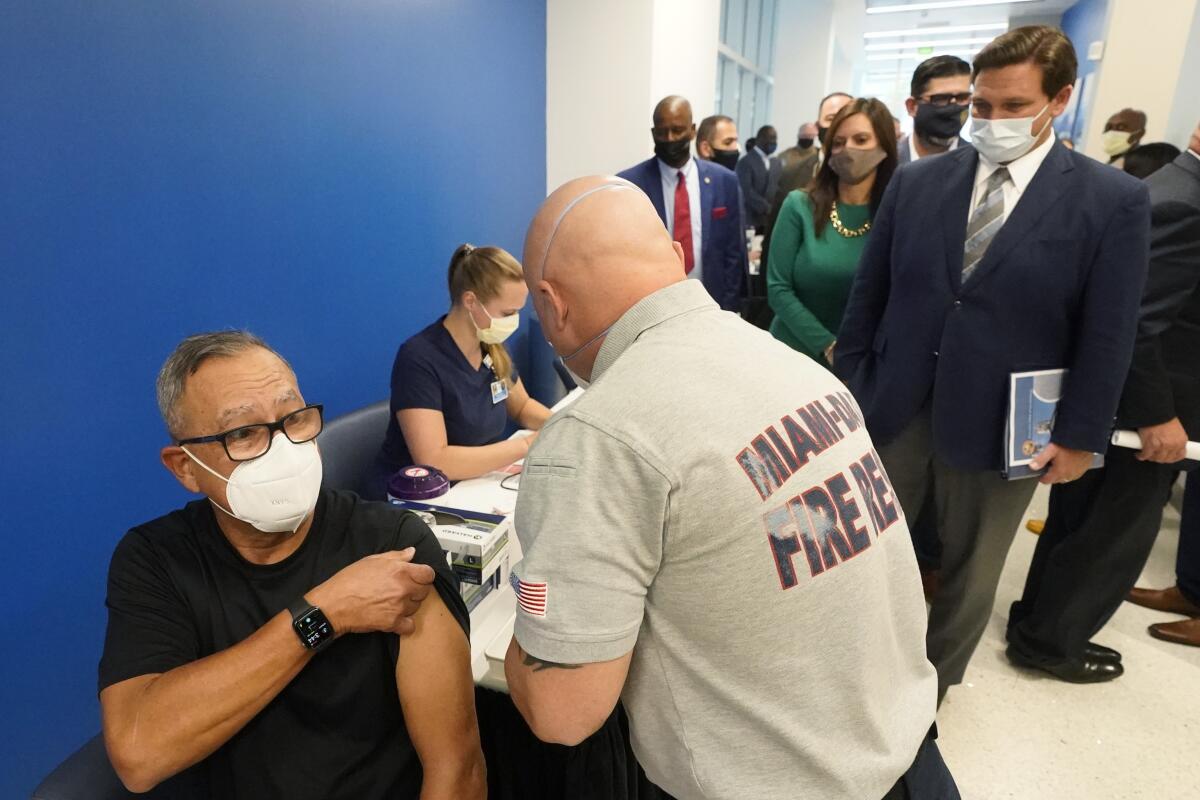
In a follow-up analysis written by Bollyky and two co-authors on the website Think Global Health, there are several explanations as to why Florida did comparatively well relative to other states. Among them: The state âadopted early aggressive nursing home policies, testing, and gathering restrictions to slow the spread of the virus â at a higher rate than even most states led by Democratic governors â and promoted vaccination among the elderly.â
âEarly on in the pandemic, the governor was quite aggressive trying to reach out to the elderly population about the need to be cautious,â Bollyky said. âAnd those messages took hold.â
Florida was hailed as a model for battling the coronavirus, with many favorably comparing it with California. Then the Delta variant hit and Florida fell behind California in many key metrics, especially deaths.
The analysis â which covered the period from the start of the pandemic through the end of July 2022 â found that Floridaâs early policies encouraged residents to continue to stay home, get vaccinated and wear masks at a higher rate than most other states, even after health mandates were lifted.
Among the strict steps DeSantis undertook, the analysis said, was isolating COVID patients in nursing homes and banning visitors; closing schools in March 2020 and keeping them shut for the rest of the academic year; and telling residents to avoid gatherings that could turn into super-spreader events.
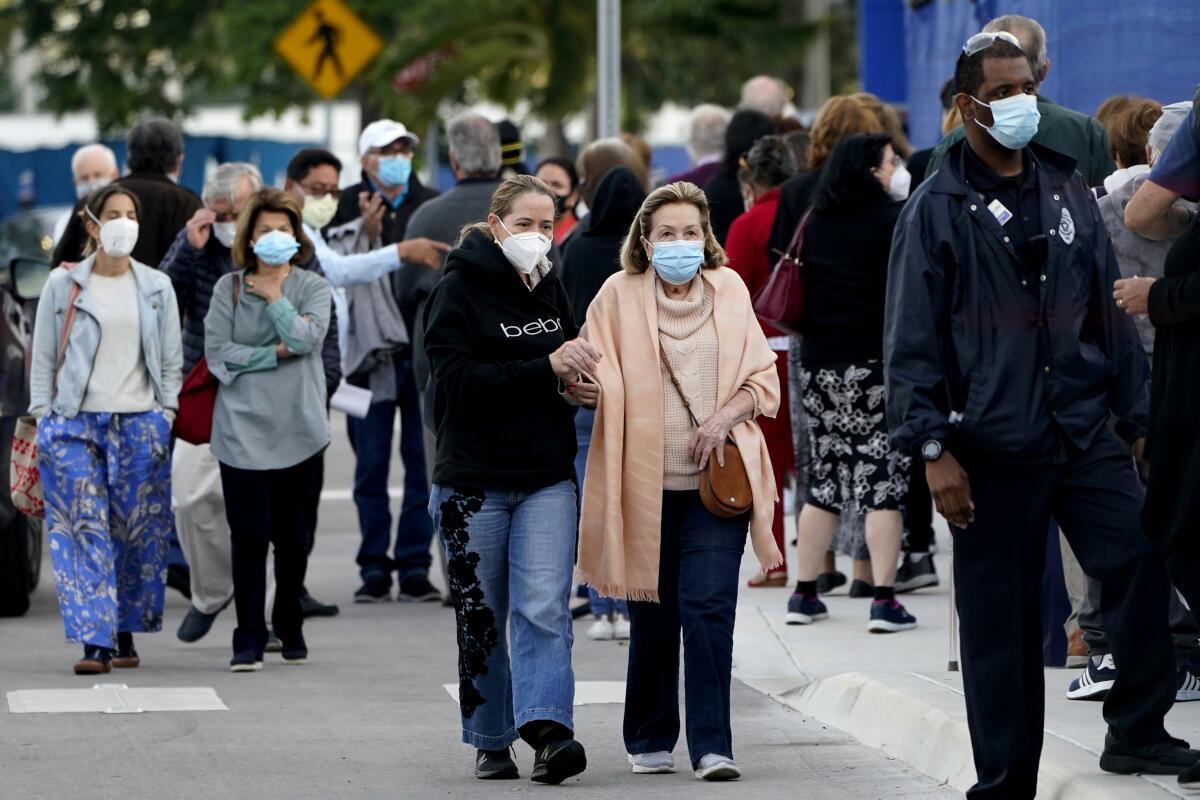
âDeSantis was one of only four governors to reopen schools in the fall of 2020, but Florida was still otherwise slower to lift gathering restrictions and bar and restaurant closures than most Republican-led states,â the analysis said.
And DeSantis was an early champion of COVID-19 vaccines for seniors, saying in January 2021, âwe want the shots to go in the arms.â Thatâs at odds with his latest denigration, suggesting Floridians who got the recently updated vaccinations were âguinea pigsâ for âshots that have not been proven to be safe or effective,â despite strong evidence to the contrary from the U.S. Centers for Disease Control and Prevention.
The Florida surgeon generalâs announcement that heâll recommend against vaccinating healthy children would run counter to CDC recommendations.
News articles in late 2021 noted efforts by some local governments and residents to take precautions, including masking up. Miami-Dade County officials ordered county employees to either get vaccinated or submit to regular testing in response to the Delta wave in mid-2021. Public schools in Miami-Dade, Broward and Palm Beach counties had mask mandates in place through November 2021.
During the first Omicron wave in late 2021, jury trials were paused in Miami-Dade County courts, and some concert promoters canceled events.
Health-cautious behaviors persisted among a number of Floridians even as, between the Delta and initial Omicron surges in 2021, DeSantis moved to prohibit vaccine mandates and strike down mask mandates.
In one notable example of the change in approach, the governor scolded students for wearing face masks during an indoor news conference in early 2022. âYou do not have to wear those masks. I mean, please take them off. Honestly, itâs not doing anything. And weâve got to stop with this COVID theater. So if you wanna wear it, fine, but this is ridiculous,â DeSantis told them. Some students took them off, while others kept them on.
Many experts stress that face coverings still protect against the coronavirus and that masking up makes sense â even if itâs no longer mandatory.
In early 2021, DeSantis began emphasizing a âmedical freedomâ agenda, the analysis noted, with his appointed surgeon general later defying federal recommendations and discouraging COVID-19 vaccinations. The analysis found Floridaâs rates of overall vaccinations for schoolchildren fell to a 10-year low, and flu shot uptake for adults fell during the pandemic, even as they rose nationally.
âIf these trends persist and extend to other public health measures, the state will be less safe,â the report said.
During last autumn and winter â a period not covered by the Lancet study â COVID-19 booster rates among Floridaâs seniors lagged badly. As of late spring, only 31% had received the updated shot, below the national rate of 43%, and Californiaâs rate of 48%.
How do California and Florida stack up on crime, the economy, housing, homelessness and free speech? Our reporters examine the statistics, talk to the experts and report the facts.
Complicating any comparison between Florida and California, however, is the multiple number of ways to calculate COVID death rates.
Thereâs the crude death rate, to which Newsom alluded during the Nov. 30 televised faceoff with DeSantis. He said Florida had a 29% worse per capita death rate compared to California. A spokesperson later said thatâs based on statistics from the CDCâs online COVID Data Tracker, which lists 110,208 deaths for California and 81,238 for Florida.
When adjusted for population â 39 million for California and 22 million for Florida, per U.S. Census estimates in mid-2022 â the rates equal 365.2 COVID deaths for every 100,000 Florida residents and 282.4 COVID deaths for every 100,000 California residents.
There are also age-adjusted statistics, which account for the fact that Californiaâs population is relatively younger demographically than Floridaâs. According to the CDC, Florida has an age-adjusted rate of 253 deaths per 100,000 residents, nominally higher than Californiaâs 249 deaths per 100,000 residents.
For 2021 â the deadliest calendar year of the pandemic nationally â the agency calculates Floridaâs age-adjusted death rate at 111.7 for every 100,000 residents, about 12% worse than Californiaâs.
But then there is the Lancet studyâs standardized rate cited by DeSantis, which was adjusted not only for age, but also for how Florida has higher rates of chronic illness. By that metric, Florida had a rate of 313 deaths per 100,000 residents â Californiaâs was 34% worse, at 418 per 100,000 residents.
California and Florida took vastly different approaches to COVID-19, generating debate about which state fared better. Hereâs what the numbers show.
Some contend that Californiaâs pandemic policy was based in science and saved many lives; others assert Florida did a better job without curtailing rights; and still others say itâs foolhardy to compare the two, given vast differences that politicians and policymakers had no control over.
In some camps, the narrative has become: âFlorida did better than you might expect overall, but they did badly on vaccination when the Delta wave came up,â Bollyky said. But even that more nuanced take doesnât provide a complete picture, he said.
âOur study covered 2½ years. So to say [Florida] did bad for a three-month period of time of that is like saying they didnât do well in the sixth inning, but did pretty well overall in the game,â Bollyky said. âThatâs true, but also doesnât really get at what the Florida story should be telling people â which is ... that [officials] did their work early, and then the population continued to do its work.
âAnd in some ways, the governor has failed to give himself credit for what he did early â for political reasons, presumably â and failed to give Floridians credit for what they did throughout the pandemic.â
Cross-country moves between progressive California and conservative Florida have taken an outsize role in the rivalry between Govs. Ron DeSantis and Gavin Newsom, who are set to debate Thursday night.
The original Lancet study also rebuts the perception that states that prioritized lives did so by sacrificing the economy and education. Virtually all states â whether led by Republicans or Democrats â instituted health mandates in the first months of the pandemic, Bollyky said. The big divide occurred after the Delta wave hit in summer 2021, when Democratic-leaning states were more likely to impose new pandemic policies.
Notably, the Lancet study did not find any association between a higher or lower state gross domestic product and higher or lower coronavirus infections or deaths.
âWith the exception of restaurant closures, none of the policy mandates that we studied â stay-at-home orders, gathering restrictions, school closures, gym or pool closures, mask mandates, vaccine mandates â were associated with lower GDP or employment at the state level,â Bollyky said.
In terms of the overall strength of the economy, âthere was no choice between public health and the economy to be made. At least thatâs not what our data shows,â Bollyky said. âYou donât see some nationwide association between âlockdownâ and âfreeâ states and better economies.â
The pandemic coincided with declines in U.S. educational performance, the Lancet study said, but the data analyzed donât indicate learning losses were systematically associated with primary school closures at the state level.
âCalifornia, a state with long school closures during the pandemic, had test score declines similar to or smaller than those in Florida and Maine, states with low rates of school closures,â the study said.
More to Read
Get the L.A. Times Politics newsletter
Deeply reported insights into legislation, politics and policy from Sacramento, Washington and beyond. In your inbox three times per week.
You may occasionally receive promotional content from the Los Angeles Times.
